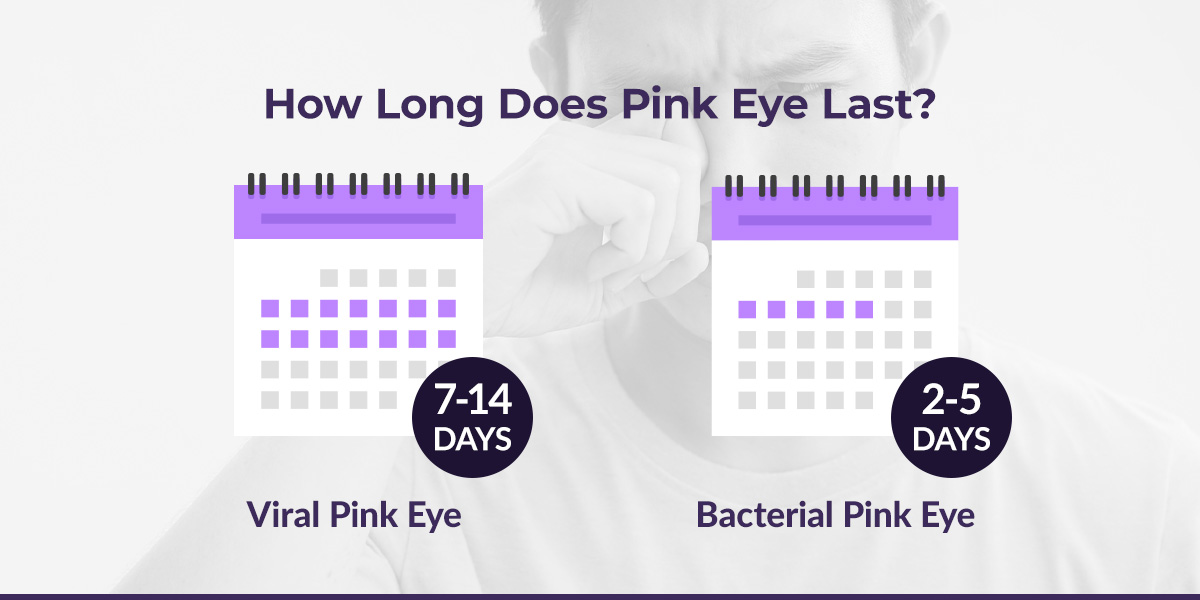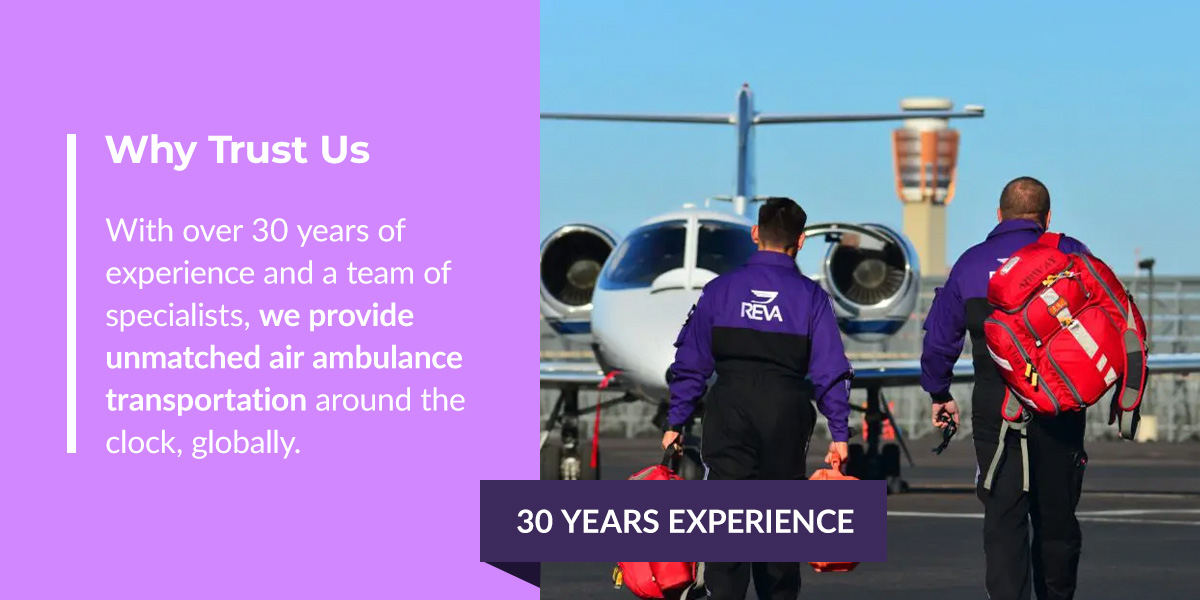Blog
STAYING ON THE FOREFRONT OF MEDICAL AIR TRANSPORTCan You Fly With Pink Eye?
Pink eye is an uncomfortable condition that can unexpectedly halt your travel plans. Whether you’re dealing with allergies or fighting off an infection, pink eye can make it challenging to fly safely. While it’s always best to stay home when you’re sick, you might have a flight you can’t miss. Let’s look at this condition, when to stay home and how to travel with pink eye.
What Is Pink Eye?
Pink eye, or conjunctivitis, is an infection or irritation of the membrane around your eye — called the conjunctiva. Pink eye has several causes. You can get pink eye from bacteria, viruses, allergens or irritants.
While there are contagious and noncontagious pink eye causes, they have the same symptoms, so it’s better to be safe and take precautions to avoid spreading pink eye if you’re experiencing symptoms. Symptoms include watering, redness, itchiness, eye discharge or crusting, and swelling.
How Does Pink Eye Spread?
Pink eye caused by irritation or allergies is not contagious and won’t spread to others. If bacteria or a virus causes your pink eye, you can give it to other people. In these cases, pink eye spreads through contact with infected people or surfaces. Touching your eyes and then touching a surface or person can spread pink eye. Pink eye can also spread through fluids from coughing or sneezing.
It’s important to wash your hands frequently and cover your mouth when you have pink eye to avoid spreading it to others.
Can You Be Around Someone With Pink Eye?
Since it’s difficult to tell what causes pink eye, it’s best to avoid close contact with someone who has it. Pink eye spreads easily, and close contact puts you at risk of infection. If you have to be around someone with pink eye, remember to wash your hands frequently and avoid touching your eyes. Additionally, avoid sharing items like makeup tools, towels or pillowcases to reduce the transmission risk.
How Long Does Pink Eye Last?
The duration of pink eye depends on the cause. Viral pink eye takes 7 to 14 days to clear up on its own, while bacterial pink eye takes two to five days with treatment. If you’re dealing with allergic pink eye, you need to remove or treat the allergen to resolve the irritation. Similarly, removing the source of irritation will clear up irritant pink eye. It’s essential to consult your doctor to get your pink eye identified and treated.
Can You Fly With Pink Eye?
You should stay home if you have pink eye, especially if it’s currently untreated. Pink eye can be contagious, and it often impacts vision at the height of its symptoms. Deciding if you can travel with pink eye will depend on your condition and travel needs. If you know your pink eye is caused by allergies or irritation, you can try to fly if you’re comfortable. However, you should avoid flying with viral or bacterial pink eye while contagious to protect yourself and others.
The Risks of Flying With Pink Eye
Pink eye is an uncomfortable condition to fly with. Symptoms like watery eyes, crust and redness might make flying in drier, higher-altitude air uncomfortable. Additionally, pink eye can occur with a respiratory infection. If your infection worsens during your flight, you will not be able to get the medical assistance you need. Flying while visibly ill with pink eye might also make other passengers uncomfortable. You should consult your health care professional for advice, as flying might make it difficult for you to get the right care.
How to Fly Safely With Pink Eye
If you need to fly, you can go on vacation with pink eye. However, you need to take extra care to avoid flying while contagious and infecting other passengers. Stay safe and hygienic with these pink eye flying tips:
- Talk to your doctor: Consult with your health care professional before traveling. They’ll assess the cause and severity of your pink eye and provide treatment options. They’ll let you know if it’s safe for you to fly with your pink eye. Getting a professional opinion will help you fly safely and reduce the chances of spreading the infection.
- Follow treatment: If you’re given medication or other pink eye treatments, follow your provider’s recommendations. You might need to take oral medications, use eye drops or apply ointment to improve your condition. It’s essential to keep up with treatment to reduce the infection time and make you more comfortable.
- Use good hygiene: Pink eye is often contagious — you need to wash your hands often and avoid touching your eyes to prevent spreading it to others. If you touch your eyes or apply medication, immediately wash your hands with soap and water. Use tissues or soft cloths to dab at your eyes and avoid touching surfaces after contacting them.
- Avoid close contact: Pink eye spreads through contact, so try to minimize close contact with other passengers. Wear a mask on the plane, avoid shaking hands and try to use only your personal items. If you can, fly while you’re less contagious to reduce the chances of infecting others.
- Be comfortable: Pack lots of tissues, wear comfortable clothes, have hand sanitizer on hand and make sure you can easily get to everything you need. Staying comfortable on the plane will help you rest and manage the flight while dealing with pink eye. Additionally, drink lots of water to help your body fight off the infection.
Why Trust Us
REVA is a company dedicated to safety, excellence and compassion. With over 30 years of experience and a team of specialists, we provide unmatched air ambulance transportation around the clock, globally.
Our commitment to exceeding industry standards has earned us numerous accolades, including a Platinum Designation from ARGUS for our aviation safety and quality. At REVA, we use a three-tiered safety method, rigorous risk assessments and strict adherence to Federal Aviation Administration guidelines to ensure the safety of our passengers and staff.
Trust us to prioritize your well-being and comfort every time.
Expert In-Flight Medical Care From REVA
If you’re dealing with non-emergency or emergency medical issues, REVA can help. Our compassionate, efficient air ambulance services get you to your medical facility whenever and wherever you need them.
Our three-step process ensures seamless transport from bedside to bedside, all managed by an expert medical team. You can rely on REVA to handle insurance coverage, financial options and ground transportation. We’ll coordinate every aspect of your journey with industry-leading precision and care.
If you want medical transport that goes above and beyond, choose REVA. Contact us today to get your free air ambulance quote!



